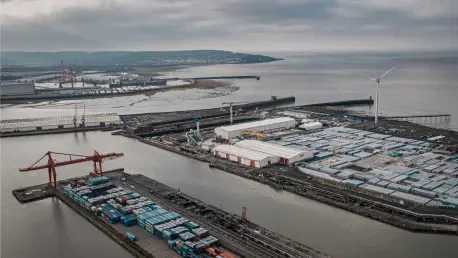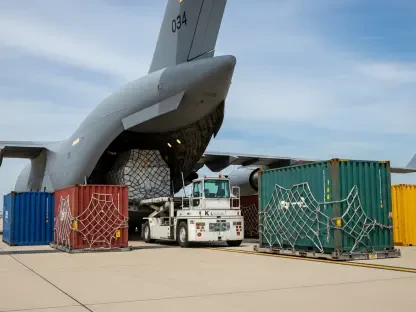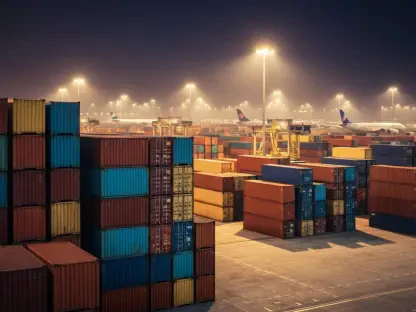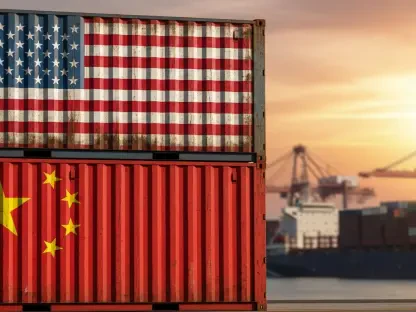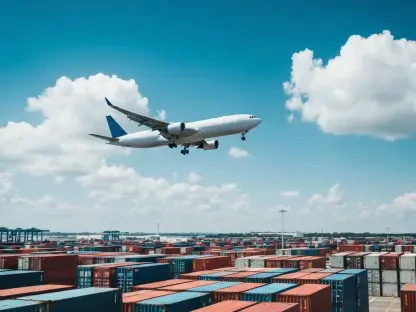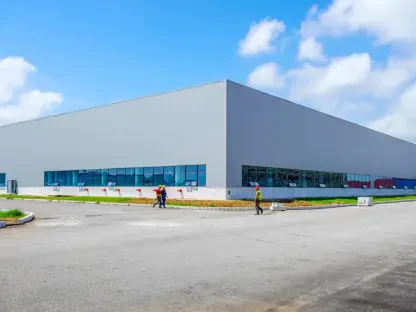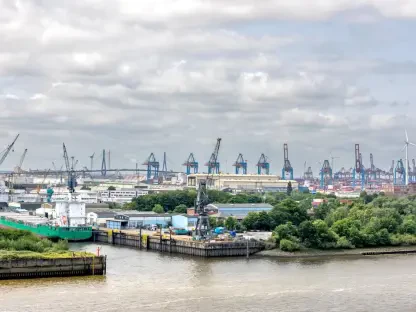Amidst a landscape of economic uncertainty and shifting global trade policies, the Port of Long Beach stands as a beacon of resilience, navigating the choppy waters of new tariffs with remarkable steadiness. As one of the busiest ports in the United States, it has managed to sustain robust cargo volumes despite the pressures exerted by recent trade barriers imposed under the current administration. Through October of this year, an impressive 8.2 million TEUs (Twenty-foot Equivalent Units) have rolled through its docks, reflecting a 4.1% uptick compared to the same period last year, which itself set a high bar with 9.6 million TEUs. This achievement signals not just operational strength but also strategic foresight by stakeholders who have adapted to mitigate the impact of tariffs. The port’s ability to handle such volumes without congestion, even surpassing levels seen during the peak of the pandemic, underscores a story of adaptability and determination that merits a closer look.
Cargo Volumes Showcase Resilience
The sustained cargo volumes at the Port of Long Beach highlight a striking defiance against the backdrop of tariff-related headwinds. Port CEO Mario Cordero has emphasized that current figures are on pace to rival last year’s record-breaking totals, a testament to the port’s capacity to manage high traffic efficiently. A key factor in this success lies in the absence of bottlenecks, which plagued many ports during earlier global disruptions. Retailers and shippers have played a pivotal role by maintaining steady import flows, ensuring that goods move through without delay. This operational smoothness has positioned the port as a critical hub in the national supply chain, even as economic policies create uncertainty. The data speaks volumes: the consistent handling of millions of containers month after month demonstrates a robust infrastructure capable of withstanding external pressures, setting a benchmark for other ports grappling with similar challenges.
Beyond the raw numbers, the resilience of cargo volumes owes much to proactive strategies employed by industry players. COO Noel Hacegaba points to frontloading as a critical tactic, where retailers have imported goods ahead of schedule to sidestep anticipated tariff hikes. This approach led to noticeable spikes in volume during key months like January, aligning with significant policy shifts, and July, before a temporary tariff pause lapsed. Such strategic timing has created artificial peaks, cushioning the port against potential dips that might have otherwise occurred. While this method has proven effective in maintaining throughput, it also reflects a broader adaptability among supply chain stakeholders who are navigating an unpredictable policy landscape. The ability to anticipate and respond to tariff timelines has not only sustained volume but also minimized disruptions for consumers, at least in the short term, showcasing a collaborative effort to keep commerce flowing.
Frontloading as a Strategic Buffer
Frontloading has emerged as a linchpin in the port’s ability to weather tariff storms, offering a temporary shield against economic turbulence. By accelerating imports before tariff increases took effect, retailers have managed to stockpile holiday goods and essential items well in advance, a move that has bolstered cargo figures significantly. According to insights from the National Retail Federation (NRF) and Hackett Associates, this tactic has led to an early influx of shipments, particularly for seasonal merchandise, which would typically arrive closer to the end of the year. The result is a buffer that has kept the port bustling, even as the broader market braces for potential slowdowns. This deliberate shift in import timing illustrates how businesses are adapting to policy unpredictability, prioritizing stability over traditional schedules to protect their bottom lines and ensure product availability.
However, the benefits of frontloading come with a caveat, as the strategy is not without its limits. With holiday inventories largely imported earlier than usual, a noticeable dip in cargo volumes is anticipated in the closing months of the current year. Industry analysts, including those from the NRF, project that once these stockpiles are accounted for, the port may see reduced activity as the year winds down. This temporary lull, while expected, underscores the artificial nature of the volume peaks created by frontloading. It also raises questions about sustainability, as businesses cannot indefinitely rely on early imports to offset tariff costs. The challenge lies in balancing these short-term gains against the longer-term realities of trade policy impacts, a dynamic that will likely shape the port’s performance in the coming quarters and test the ingenuity of supply chain planners.
Future Outlook and Global Trade Shifts
Looking ahead, the trajectory for the Port of Long Beach appears mixed, with forecasts signaling both challenges and cautious optimism. The NRF and Hackett Associates predict a 2.3% decline in overall cargo volumes for the current year, with a more significant drop expected in the first quarter of next year. This downturn is attributed to the exhaustion of frontloading efforts and lingering uncertainties around tariffs, which continue to cloud market predictions. Despite this, CEO Mario Cordero expresses measured confidence, pointing to a potential moderate increase in volumes by next year, buoyed by recent agreements between the U.S. and China that may ease some trade tensions. This delicate balance of projected declines and hopeful recovery highlights the complex interplay of domestic policy and international relations that will define the port’s near-term future.
Beyond immediate forecasts, broader shifts in global trade patterns loom large over the port’s long-term strategy. Cordero has noted the uncertainty surrounding reliance on Chinese manufacturing, suggesting that production may increasingly pivot to regions like Southeast Asia. Such a realignment could fundamentally alter the sources of cargo flowing through the port, necessitating adjustments in logistics and partnerships. Additionally, consumer impacts are expected to grow as shippers begin passing on tariff costs through higher prices, a concern shared by industry voices like Jonathan Gold of the NRF. While retailers have so far absorbed much of the burden, this may not remain viable, potentially reshaping demand dynamics. These evolving trends signal that while the port has adeptly handled current challenges, the road ahead will demand flexibility and foresight to navigate a transforming global trade landscape.
Reflecting on a Year of Strength
As the year drew to a close, the Port of Long Beach stood out for its steadfast performance amid tariff uncertainties, having handled millions of containers with efficiency and poise. The strategic use of frontloading by retailers proved instrumental in maintaining high cargo volumes, while robust operations prevented the congestion seen in past crises. Looking back, the collaboration between port authorities and industry stakeholders was pivotal in sustaining this momentum. Moving forward, attention must shift to innovative solutions, such as diversifying trade routes and investing in infrastructure to handle potential shifts in manufacturing bases. Exploring new partnerships and leveraging technology for predictive analytics could further strengthen the port’s position against future disruptions. As global trade continues to evolve, staying ahead of policy changes and market trends will be crucial for ensuring that this vital hub remains a cornerstone of economic activity.
